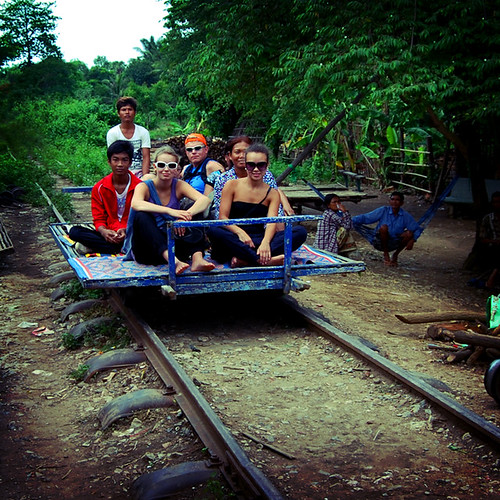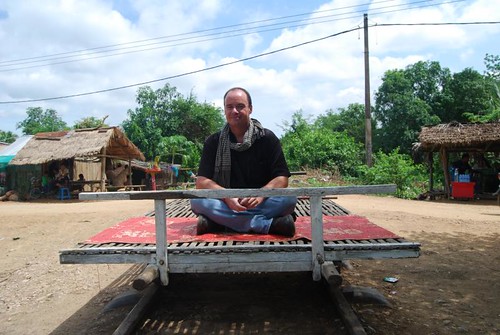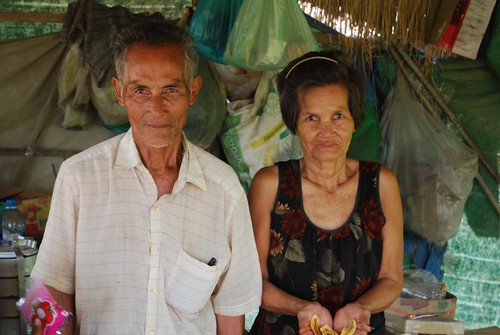BATTAMBANG, CAMBODIA – With the upgrade of the rail line which runs
between Battambang and Phnom Penh, a testament to Cambodian ingenuity
will soon come to an end.
The bamboo train, a homebrew rail service that provides transport
between many of the villages around Battambang, is scheduled to be
stopped next month.
The villagers took it upon themselves to get around the problem of
transporting goods and people by taking over the disused rail track
running through the villages. A group of people began building their own
platforms made of bamboo and wood, attaching wheels from old tanks, and
running them along the track.
Previously, these bamboo platforms were powered by someone using a
pole to push it along the track. These days, locomotion is provided by a
small 5 horsepower motor connected to the rear set of wheels by a fan
belt.

The bamboo train (each vehicle known locally as a “norry”) moves
not-so-smoothly along the dilapidated track at up to 40 km/h. Locals use
the norrys to transport livestock and grain to market, or to their
homes. It’s become quite a tourist attraction, with visitors enjoying
the scenic ride as well.

Given the number of norrys travelling on the single line, a system of
etiquette has arisen when two norrys travelling in the opposite
direction meet.
The norry with a lighter load is picked up off the track o the
heavier-laden norry can continue on. The pilot of the more loaded norry
helps to take the lighter one off the track and put it back on again.

Despite the stretch of track (which goes all the way to Phnom Penh)
being one of few sections of rail to survive the Khmer Rouge regime,
it’s in very shoddy shape. Much of the track is warped, and the joins
are so rough that running over them can be a boneshaking experience.
Until November 2008, there was a proper train service between Phnom Penh
and Battambang. However, the track is in such disrepair that the 275
kilometer journey could take up to 14 hours. A slow train indeed. The
service has been cancelled, probably because of the disintegration of
the track, but also due to the impending repair work that will allow
regular trains to run at a more regular speed.
Unfortunately for the villagers around Battambang, such progress will
mean and end to their ad hoc transport system. A small norry
construction industry has sprung up, and there are numerous small stores
along parts of the track that act as rest stops for norry passengers
and their drivers.


Oun and his wife Sem run one such stall about 7 kilometers from
“norry central”, where most visitors catch the bamboo train. They offer
shade and cool refreshments to travellers.
Given the highly unofficial status of the bamboo railway, it’s
inevitable in a way that it would one day finish. However, it’s sad to
see something this unique (not to mention useful to the local people as
well as providing jobs for many) come to an end.